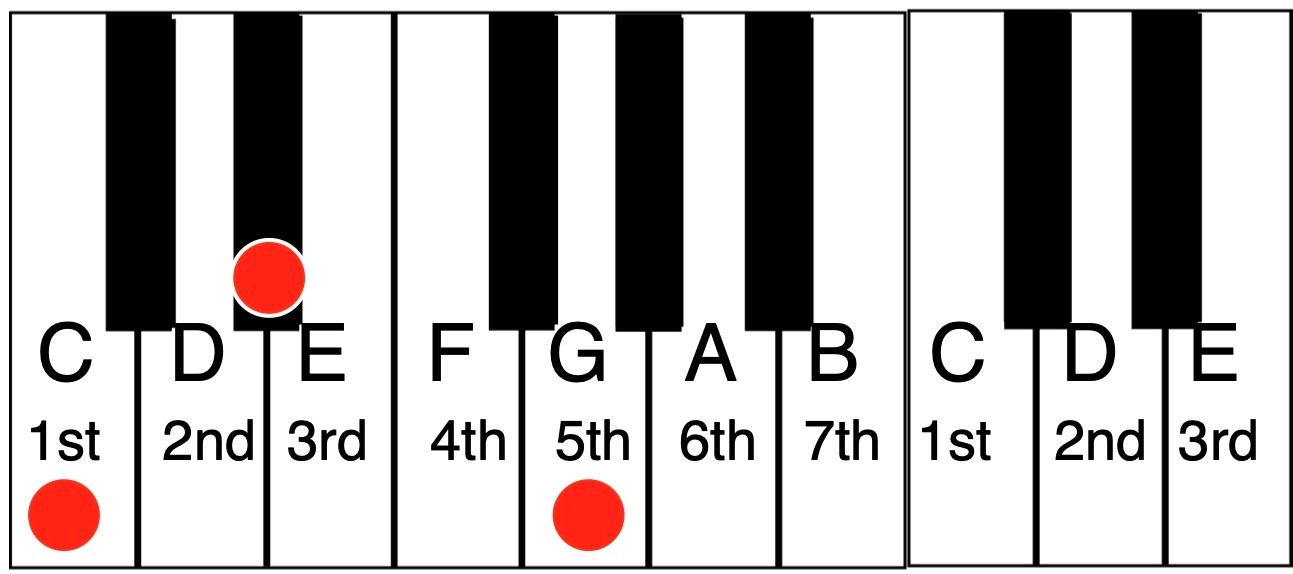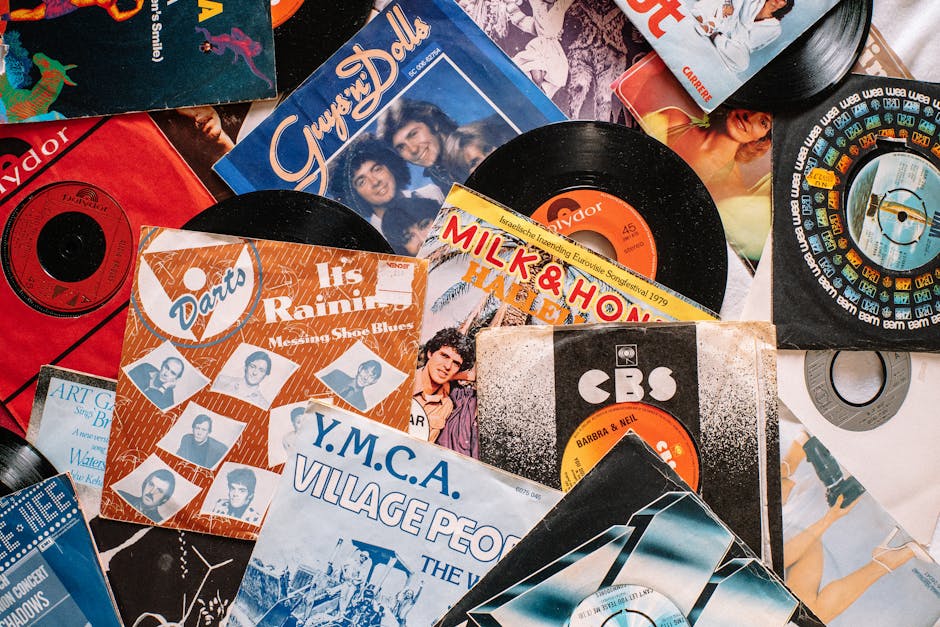Welcome, music lovers and aspiring musicians, to the ultimate guide to unraveling the mysterious world of chord progressions! Like a tangled mess of headphone wires, understanding chord progressions can feel like an uphill battle. But fear not, because we’re here to untangle the web of notes and show you the key to unlocking the foundations of music. So grab your air guitar, tune up your imaginary piano, and get ready to rock ‘n’ roll through the fascinating journey of chords and melodies!
Contents
- 1
- 2
- 3 Decoding Common Chord Progressions in Popular Music
- 4 The Science Behind Emotional Responses to Chord Changes
- 5 Advancing Your Music Theory: Modulation and Key Changes
- 6 Incorporating Advanced Chord Progressions into Composition
- 7 Analyzing Iconic Songs and Their Underlying Harmonic Structures
- 8 FAQs
- 9 It’s a Chord-tastic Journey!
basics-of-chord-progressions”>Understanding the Basics of Chord Progressions
So you’ve picked up that guitar or sat down at the piano, and you’re ready to conquer the world of music with your amazing chord progressions. But first, let’s make sure you understand the basics before you start composing your Grammy-winning masterpiece.
First things first, let’s talk about what a chord progression actually is. In simple terms, it’s a series of chords played in a specific order that creates a harmonious sound. Think of it like following a recipe to bake a delicious cake – except in this case, the cake is a killer song that’s guaranteed to get stuck in your head for days.
Now, let’s break it down even further. A chord progression is typically made up of three main components:
- Root chord: This is the starting point of your progression, like the first step in a dance routine. It sets the tone for the rest of the chords that follow.
- Transition chords: These are the middle chords that help move the progression along smoothly, like the trusty sidekicks to the main hero (aka the root chord).
- Resolution chord: Ah, the sweet release at the end of the progression. This final chord brings everything together, like the grand finale of a fireworks show.
So there you have it – the ABCs of chord progressions. Now go forth, young musician, and start creating magic with your newfound knowledge. Who knows, maybe one day we’ll be grooving to your chart-topping hits on the radio!

tonic–subdominant-and-dominant-chords”>Exploring the Role of Tonic, Subdominant, and Dominant Chords
Ever wondered why certain chord progressions just sound so darn good? Well, look no further than the magical trio of tonic, subdominant, and dominant chords! These bad boys are the backbone of pretty much every catchy tune you’ve ever jammed out to.
Think of the tonic chord as the home base of your musical journey. It’s that warm, cozy feeling you get when you finally sink into your favorite couch after a long day. The tonic chord sets the tone (pun totally intended) for the rest of the song, giving you that sense of stability and resolution that you crave.
Next up, we’ve got the subdominant chord. This sneaky little devil likes to add a bit of tension and mystery to the mix, leading your ears on a wild goose chase before finally resolving back to the good ol’ tonic. It’s like that mischievous sidekick who’s always up to no good but somehow manages to make everything more exciting.
And finally, we come to the dominant chord. This bad boy is like the rockstar of the group, demanding attention and stealing the show with its powerful, dominant presence. It’s that moment in the song where you can’t help but crank up the volume and belt out the lyrics at the top of your lungs.

Decoding Common Chord Progressions in Popular Music
Have you ever listened to a catchy song on the radio and thought to yourself, “How do they come up with these awesome chord progressions”? Well, fear not! We’re here to decode some of the most common chord progressions in popular music so you can impress your friends at the next karaoke night.
One of the most popular chord progressions in music is the I-IV-V progression. This progression can be found in countless hit songs across genres and is known for its ability to elicit a sense of familiarity and nostalgia. So next time you hear a song that sounds just a bit too familiar, chances are it’s rocking the I-IV-V.
Another common chord progression is the vi-IV-I-V progression. This progression is often used in ballads and power anthems, making it perfect for those moments when you want to sing your heart out and pretend you’re headlining a concert. So grab your air guitar and get ready to rock out to those vi-IV-I-V tunes!
And let’s not forget about the classic iii-vi-ii-V progression. This sophisticated progression is often found in jazz and blues music, adding a touch of complexity and intrigue to any song. So the next time you hear those smooth iii-vi-ii-V chords, sit back, relax, and enjoy the musical journey.

The Science Behind Emotional Responses to Chord Changes
Have you ever wondered why your heart skips a beat when you hear a dramatic chord change in a song? Well, let me break it down for you in a way that even a tone-deaf walrus could understand.
When we hear a chord change, our brains go into overdrive trying to make sense of the new sound. It’s like trying to solve a Rubik’s Cube with our ears. Our neurons start firing faster than a caffeinated cheetah, sending signals to our amygdala – the brain’s emotional center. And before you know it, we’re on an emotional rollercoaster ride that makes the Tower of Terror look like a kiddie slide.
But wait, there’s more! It turns out that certain chord progressions can trigger specific emotional responses. For example, a minor chord can make us feel sad and introspective, like we just watched a puppy get adopted by someone else. On the other hand, a major chord can make us feel happy and euphoric, like we just found out there’s a two-for-one sale on ice cream.
So next time you feel like your heart is being pulled in a thousand different directions by a simple chord change, just remember - it’s all thanks to the magical science of music and our brain’s wacky emotional wiring.

Advancing Your Music Theory: Modulation and Key Changes
Have you ever wanted to elevate your music theory skills to the next level? Well, buckle up because we’re diving into the world of modulation and key changes.
Modulation is like the musical equivalent of taking a scenic detour on your road trip. It’s when you smoothly transition from one key to another, creating a whole new vibe for your song. Think of it as changing lanes on the highway, but way more harmonious.
Key changes, on the other hand, are like switching gears in a car. They add excitement and unpredictability to your music, keeping your listeners on their toes. It’s like suddenly hitting a speed bump when you least expect it – but in a good way.
So, if you’re ready to shake things up in your musical journey, dive into the world of modulation and key changes. Who knows, you might just unlock a whole new level of creativity and surprise yourself with what you can achieve!
Incorporating Advanced Chord Progressions into Composition
When it comes to incorporating **advanced chord progressions** into your compositions, the possibilities are endless! Say goodbye to boring I-IV-V progressions and hello to jazzy, sophisticated harmonies that will take your music to the next level.
One way to spice up your chord progressions is by experimenting with **secondary dominants**. These chords can add tension and movement to your music, creating a sense of excitement and unpredictability. Try adding a V/V chord before resolving to the dominant to add a surprising twist to your harmonies.
Another fun technique to try is **modal interchange**. By borrowing chords from parallel modes, you can create a rich and colorful sound palette that will keep your listeners on their toes. Mix and match chords from different modes to create interesting and unexpected harmonic progressions.
And don’t forget to play around with **extended chords** like ninths, elevenths, and thirteenths. These lush, complex chords can add depth and sophistication to your music, giving it a modern and avant-garde edge. Experiment with different voicings and inversions to find the perfect sound for your compositions.
Analyzing Iconic Songs and Their Underlying Harmonic Structures
Today, we delve into the mystical world of iconic songs and their intricate harmonic structures. Strap in, because this ride is going to be a wild one!
First up, let’s talk about the classic Beatles hit “Hey Jude”. This toe-tapping tune features a simple yet effective chord progression that is bound to get stuck in your head for days. With its use of I-IV-V chords, “Hey Jude” is a masterclass in catchy songwriting that will have you singing along in no time.
Next on our list is the Queen anthem “Bohemian Rhapsody”. Known for its epic length and genre-blending style, this song is a playground for harmonic experimentation. From its haunting modal interchange to its jaw-dropping key changes, “Bohemian Rhapsody” is a testament to the power of pushing musical boundaries.
And of course, we can’t forget about the iconic Michael Jackson hit “Billie Jean”. This funky masterpiece features a driving bassline that keeps the groove going strong. With its use of syncopated rhythms and unexpected chord shifts, “Billie Jean” is a shining example of how a killer harmonic structure can elevate a song to new heights.
FAQs
Is it really necessary to understand chord progressions in music?
Absolutely! It’s like trying to bake a cake without knowing the ingredients – you might end up with a disaster. Understanding chord progressions is the key to creating beautiful and harmonious music.
How can learning about chord progressions improve my music skills?
It’s like having a superpower in the music world! By understanding chord progressions, you can compose your own music, improvise with confidence, and even analyze and appreciate music on a deeper level.
What are some common chord progressions that every musician should know?
The classics! The I-IV-V progression is like the holy trinity of music, while the ii-V-I progression is the secret sauce of jazz. Knowing these progressions will give you a solid foundation to build upon.
Can I get creative with chord progressions, or do I have to stick to the basics?
Oh, absolutely! In fact, the best music often comes from breaking the rules. Experiment with different progressions, add unexpected chords, and let your imagination run wild. Who knows, you might just create the next musical masterpiece!
How can I start learning about chord progressions if I’m a total beginner?
Fear not, young padawan! Start by learning the basic major and minor chords, then delve into simple progressions like the I-IV-V. Practice playing them on your instrument, listen to how they sound, and soon enough, you’ll be a chord progression maestro!
It’s a Chord-tastic Journey!
We hope you’ve had a harmonious time diving into the world of chord progressions with us. Remember, music is like a puzzle – sometimes you just need to unravel the chords to unlock its full potential. So grab your guitar, warm up those vocal cords, and start creating some melodious magic! Happy strumming! 🎸🎶



